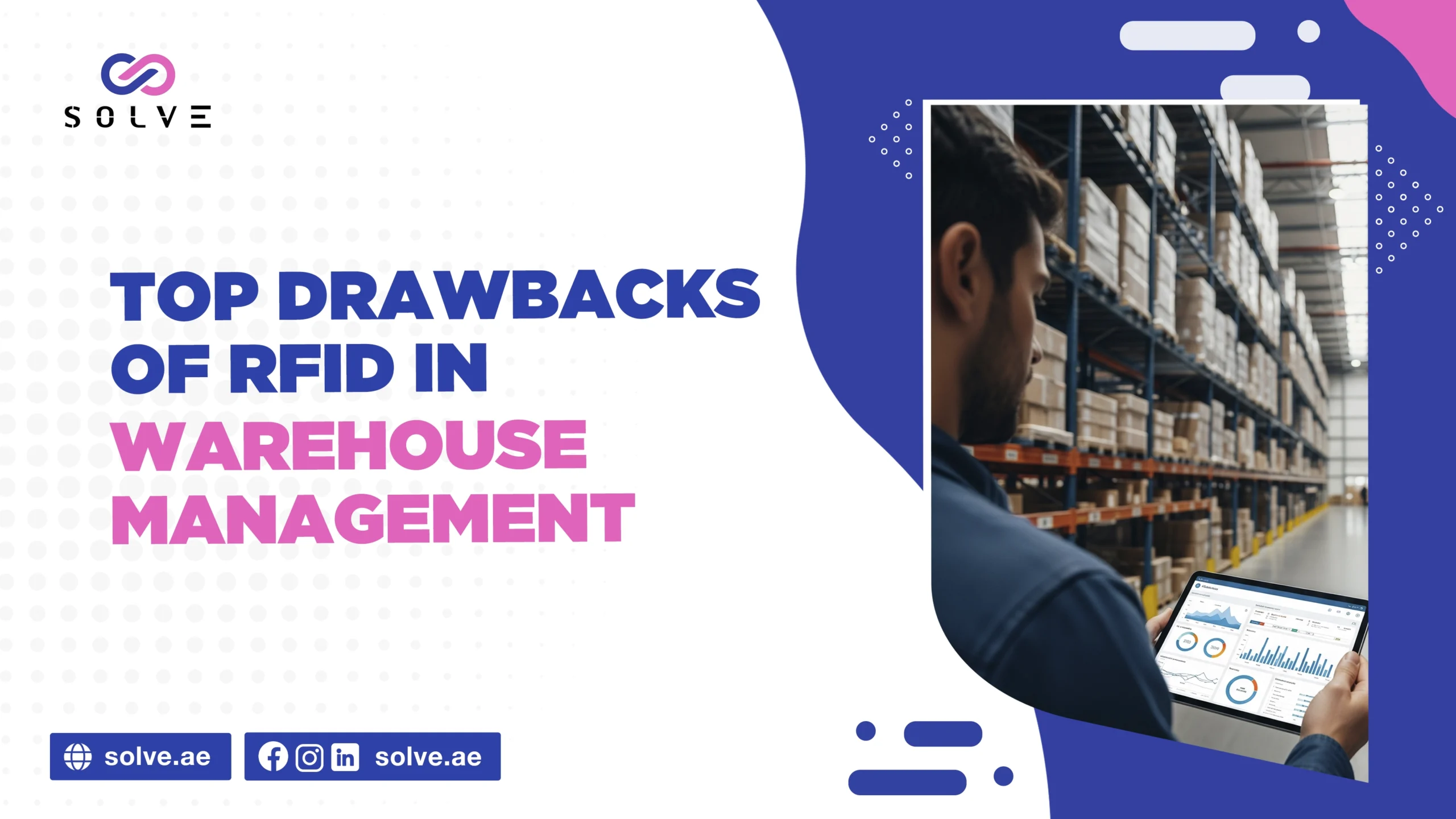- By Vanshika Choudhary
- June 30, 2025
Radio Frequency Identification (RFID) technology has brought a transition to warehouse management, real-time tracking, inventory automation, and lessening manual errors. Nonetheless, while RFID has several merits, it poses some challenges in warehouse applications, which can quickly overwhelm its benefits, more so with improper planning and implementation. In this blog, we will analyze the major drawbacks of RFID in warehouse management, providing an in-depth view of the issues companies face when adopting this technology.
High Initial Capital and Maintenance Cost
. Setting up an RFID system requires the purchase of tags, which are significantly more expensive than conventional barcode labels. Special RFID readers are also required, along with antennas and software, as well as integration services. Active RFID tags, with their far longer read range and stronger functionality, can be cost-prohibitive, sometimes reaching a price of several dollars per tag.
Technical Complexity and Integration Challenges
Setting up an RFID solution entails a high level of technical difficulty. The greater the level of integration with preexisting warehouse management systems (WMS) or ERP platforms, the higher the complexity becomes. Very often, warehouses find that their legacy systems do not immediately coexist with RFID technology. Custom software development becomes a route to follow, or the introduction of further middleware, or, even worse, the complete revamp of their IT infrastructure.
With technical complexity, further see the physical installation aspects of the readers and antennas. These must be properly located for maximum coverage and minimum interference from the surroundings. There is also consideration for training from the staff. They will have to learn to operate and troubleshoot the new system, which will put the operations on hold during this transition.
Signal Interferences and Environmental Constraints
In general, RFID uses radio waves, which may or may not be interfered with by several sources traditionally existing within warehouses. Metal shelving can block a signal, electronic equipment can create interference, and even the building materials themselves can do the same. This can result in no scanning, false data being accrued, or even complete system failure. Water, on the other hand, may also absorb radio waves, complicating matters further for the RFID system in an environment where water is present.
In a large warehouse, this may call for extra investments in extra readers or pricier tags with greater range, both cost additions to RFID and hence complexity to its use.
Standardization and Interoperability Issues
Inherent lack of standards hereby presents problems in integrating RFID solutions from alternative distributors or in upgrading, at times, whenever new technology emerges. Such interoperability concerns may force warehouses into an agreement with only one vendor, increasing the risk of vendor lock-in and limiting options for changes in the future.
Concerns About Data Security and Privacy
By means of RFID, massive amounts of data are sent through wireless communication, thus presenting security and privacy issues. If an RFID system lacks strong encryption or access control, the system can be wiretapped, cloned, or trafficked. With regard to data concerned with the inventory of an undetermined organization, cyberattacks against an RFID infrastructure might bring down such an organization or even activate theft.
These privacy issues become all the more pertinent when the concerned company ships high-value goods or extremely sensitive items or when it tracks employees through RFID badges. Security of data is further a matter of continual investment in cybersecurity, thereby increasing the total cost of ownership.
Tag Performance and Durability Issues
There are RFID tags, notably of the passive kind, that are vulnerable to performance and durability issues. A harsh warehouse environment would expose these tags to dust, moisture, impact, or extreme temperature conditions, which could negatively affect the performance of the tags or cause them to fail outright. Active tags have their fair share of disadvantages too: they suffer from battery depletion, and batteries need replacement periodically alongside new tags.
Scalability Challenges:
While point applications can work well, the rollout of RFID over big, complex warehouses poses additional challenges. Every additional reader, antenna, and network infrastructure further increases capital expenditure.
Vendor Dependence and Lock-in
An important aspect to consider while undertaking RFID implementation is the fact that it becomes dependent on suppliers for hardware, software, and support for the infinite future. This dependence can, therefore, restrict the operations of a warehouse if ever it wishes to switch to a better solution or if ever the vendor’s technology becomes obsolete. Lock-in from a vendor perspective can also make the installations of costs for upgrades, maintenance, and support contracts costlier over time.
Limited Industry Knowledge and Skill Gap
Wide remains the warehouse knowledge gap with respect to RFID Technology; many warehouse managers and workers do not know how RFID functions, and they tend to reject or misuse the system. So, from wrongful application, such as RFID misuse, they would then end up improperly implementing the system and downplaying it, thus losing all the benefits they ought to be reaping from it.
Regulatory and Compliance Issues
Adding this layer makes RFID adoption all the more complicated and costly, for noncompliance will lead to fines or disruptions in operations or will generate additional costs for the warehouse to reconfigure or replace the equipment. Check out our latest blog post on
Top Benefits of RFID in Warehouse Management
Real-Life Example: When RFID Fails to Deliver
Consider a mid-sized warehouse that has heavily invested in RFID to automate the tracking of inventory. After installation, signal interference coming off the metal shelving resulted in constant missed scans, leading to inaccurate stock counts. Integration with the legacy WMS required custom software development, which delayed the project and increased costs further. Likewise, in the cold storage area, condensation caused several of the RFID tags to malfunction, resulting in their frequent replacement.
Conclusion: Is RFID Right for Your Warehouse?
RFID has its benefits concerning speed, automation, and real-time visibility. The downsides in cost, technical difficulty, interference, security risks, and integration are also very severe. For many warehouses, especially those that are on a tight budget or have less complicated inventory needs, barcodes tend to be a much more feasible and economical solution.
Before adopting RFID, warehouse managers should conduct a thorough assessment of the needs. Contact us and consider the total cost of ownership, and evaluate whether the commercial technical aspects of RFID and maintenance are within their grasp so they can also consider the implications on security.




